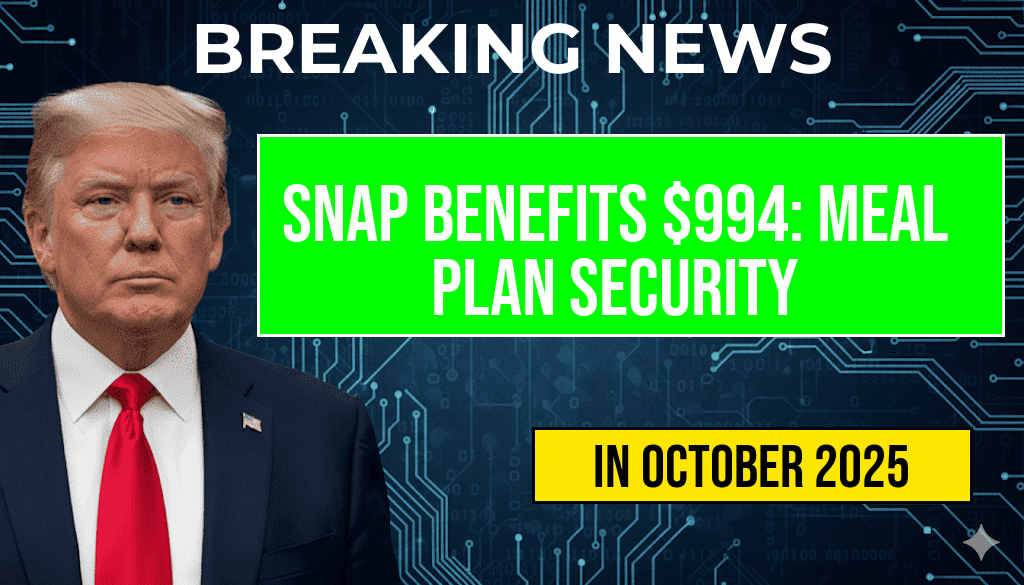During a government shutdown, many families face significant financial uncertainty, especially those relying on assistance programs like SNAP (Supplemental Nutrition Assistance Program) and WIC (Women, Infants, and Children). When combined, these benefits can total approximately three hundred twenty-four dollars per month, helping vulnerable households stretch their budgets amid economic strain. Understanding how to maximize the utility of both programs becomes crucial during such periods, ensuring families can maintain access to nutritious food without undue hardship. While SNAP offers monthly benefits to purchase groceries, WIC provides supplemental nutrition specifically targeted at pregnant women, new mothers, and young children. Effectively combining these resources requires awareness of program guidelines, eligibility criteria, and strategic shopping practices. This article explores how families can optimize their combined benefits during a shutdown, offering practical tips and navigating program nuances to support food security.
Understanding SNAP and WIC Benefits
SNAP: A Foundation for Food Security
The SNAP program is administered federally but managed through state agencies, providing monthly benefits to eligible low-income individuals and families. Benefits are loaded onto an Electronic Benefit Transfer (EBT) card, which can be used at authorized retailers to purchase most food items, including fruits, vegetables, dairy, and grains. Eligibility hinges on income, household size, and other factors, with the average benefit amount varying by state but generally averaging around $250 per month for a single household. During a government shutdown, the continuity of SNAP benefits remains a priority, but delays or administrative hurdles can occur in some states, emphasizing the importance of planning ahead.
WIC: Specialized Nutritional Support
WIC targets pregnant women, new mothers, infants, and young children, offering nutrition education, breastfeeding support, and specific food packages. WIC benefits are issued as vouchers or checks, redeemable at approved stores for items like baby formula, cereal, fruits, and vegetables. WIC benefits are typically less flexible than SNAP but are critical for the nutritional well-being of vulnerable populations. During a shutdown, WIC operations may experience disruptions, but many clinics and vendors prioritize serving WIC participants to ensure continued access.
Combining Benefits Effectively During a Shutdown
Assessing Your Total Monthly Food Budget
| Program | Average Monthly Benefit |
|---|---|
| SNAP | $250 |
| WIC | $74 |
| Total | $324 |
Families enrolled in both programs can expect to access around three hundred twenty-four dollars monthly, which can significantly offset grocery expenses. Recognizing the combined purchasing power helps families plan meals and prioritize nutritious, cost-effective options.
Strategic Shopping and Meal Planning
Maximizing benefits involves strategic shopping—focusing on nutritious, affordable foods that satisfy both SNAP and WIC requirements. For example:
- Prioritize WIC-approved items such as fortified cereals, baby foods, and dairy, which are often available at discounted rates.
- Use SNAP benefits to purchase fresh produce, grains, and other flexible food items to diversify your diet.
- Plan meals around seasonal produce and sale items to stretch your dollar further.
- Leverage store discounts, coupons, and loyalty programs to maximize savings.
Some retailers participate in dual acceptance of SNAP and WIC, simplifying the shopping process and reducing time spent navigating different stores.
Navigating Program Disruptions During a Shutdown
Government shutdowns can impact the timely delivery of benefits, especially for WIC clinics and authorized vendors. Families should:
- Verify the status of WIC clinics and vendors before shopping, using resources like the USDA WIC program website.
- Maintain a small buffer of food supplies if possible, in case of delays.
- Stay informed through official state or local agencies about potential disruptions and alternative arrangements.
Additional Resources and Support
During periods of government shutdown, community organizations and local food banks can serve as vital support networks. Many offer free or low-cost food distribution programs that complement federal assistance benefits. Families are encouraged to connect with local agencies for guidance and assistance, especially if benefits are delayed or reduced.
For comprehensive guidance, the USDA SNAP resource page offers valuable insights into maximizing benefits and understanding program protections during federal disruptions.
Similarly, the USDA WIC website provides updates on clinic operations and participant resources, ensuring families stay informed during challenging times.
Frequently Asked Questions
What is the total amount of benefits available when combining SNAP and WIC during a shutdown?
The combined benefits from SNAP and WIC amount to a total of three hundred twenty-four dollars during a government shutdown.
How can I maximize my budget using both SNAP and WIC benefits?
You can maximize your budget by carefully planning your shopping to utilize SNAP funds for groceries and WIC benefits for specific nutritional items, ensuring all eligible necessities are covered efficiently.
Are there any restrictions on what can be purchased with SNAP and WIC benefits?
Yes, SNAP generally covers food items suitable for home consumption, while WIC benefits are limited to specific nutritional products like milk, cereals, fruits, and vegetables. Both have restrictions to ensure appropriate use.
What should I do if my benefits are reduced or unavailable during a shutdown?
If your benefits are reduced or unavailable during a shutdown, contact your local agency immediately to understand your options and explore alternative assistance programs or emergency resources.
How can I plan my shopping to make the most of my benefits during a shutdown period?
To effectively plan your shopping, make a list of essential nutritional items covered by WIC and SNAP, compare prices, and prioritize bulk purchases to stretch your benefits over the duration of the shutdown.










